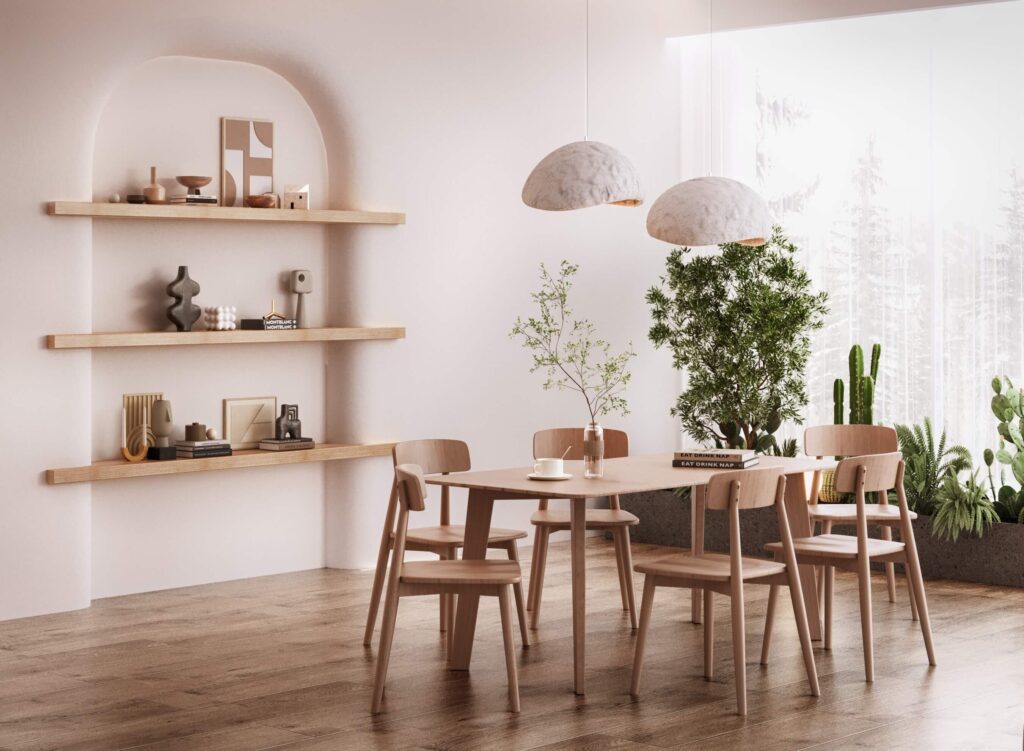Creating flow inside your home involves designing a space that promotes a harmonious and seamless transition between different areas. Here are some tips to help you achieve a sense of flow in your home. Use it as a checklist when designing your home.
Open Floor Plans
Consider an open floor plan that eliminates unnecessary walls and barriers. This design concept allows for a smooth flow between rooms, creating a sense of spaciousness and connectivity.
Consistent Flooring
Use consistent flooring materials throughout the main living areas. Continuity in flooring helps create visual flow and a cohesive look, making the space feel more unified and connected.
Thoughtful Furniture Placement
Arrange furniture in a way that encourages easy movement and clear pathways. Avoid cluttering the space with too much furniture or oversized pieces that impede circulation. Maintain a balance between functionality and open space.
Colors and Patterns
Choose a consistent color palette and patterns that complement each other. Harmonious colors and patterns create visual continuity and a sense of flow from one room to another.
Lighting
Maximize use of natural light. Use ambient lighting (and task lighting when needed) to fill out. The bulbs need two functions; dimming of power and a range of color temperatures. You want lighting that harmonizes with the time of day, and your activities. This harmonizes not only with your well-being, but with the japandi principle of drawing nature inside.
Sightlines
Consider the sightlines from one room to another. Position furniture and décor in a way that allows for clear lines of sight. You are consciously guiding where a person would look, and how they would experience what they see. Openness, balance, and harmony is what your going for, as this will help you create a seamless flow.
Transition Spaces
Pay attention to transitional areas such as hallways, staircases, and entryways. Avoid hard and abrupt shifts. Use design elements such as artwork, lighting, or rugs to create smooth transition between the different zones of the home.
Cohesive Décor
Choose décor items that tie the various spaces together. Consistent themes, styles, or color schemes in your décor can help create a unified and flowing aesthetic throughout the home.
Natural Elements
Incorporate natural elements like plants, natural textures, and materials. Every japandi inspired home needs living nature beings inside. Choose plants that are distinct in that either their lines are prominent, they have thick and large green leaves, or they have particulary delicate flowers. Colors are either pure green or align with your chosen color scheme. Elements of nature can provide a sense of continuity with the outdoors and bring a calming and grounding effect to the space.
Minimize Clutter
Keep the space organized and clutter-free. Clutter disrupts flow and can make a space feel chaotic. Use storage solutions to maintain a tidy environment and allow for easy movement.
Connected Living
By applying these tips, you can create a home that promotes a sense of flow, allowing you to move through the space effortlessly and experience a harmonious and connected living environment.
